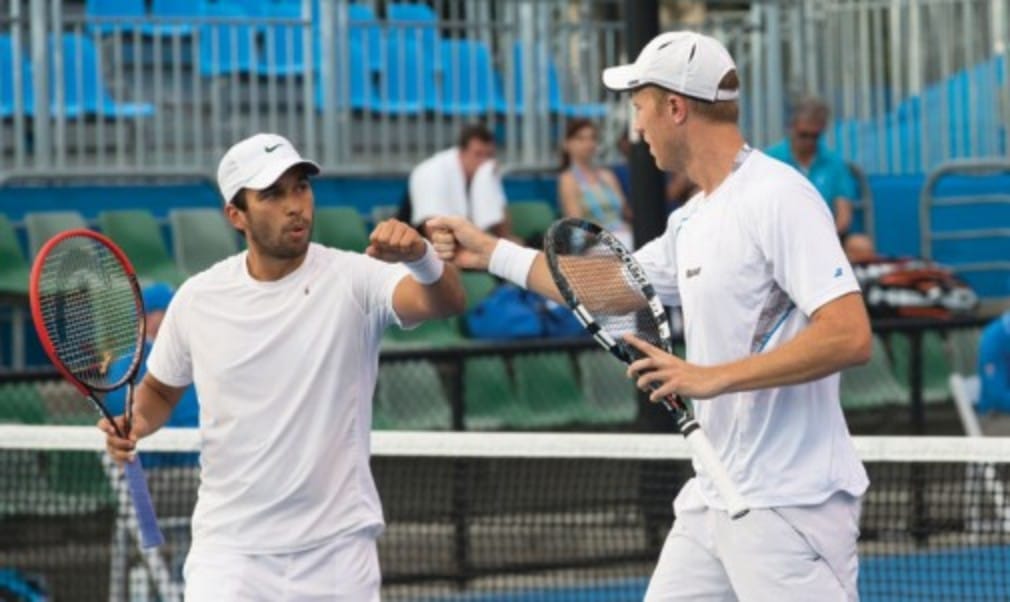
The key tips and tactics for doubles success
Originally published on 05/08/14
“You have got to think fast,” says Britain’s No.1 ranked doubles player Dom Inglot. “With singles you can get into a bit of a rhythm, read the game, but doubles is quicker, you have got to react quickly.”
As singles players become more powerful, the doubles game has evolved too, and reaction speeds have become razor-sharp to cope with the pace – and net play, poaching and intercepting is more challenging than ever.
“Doubles has changed a lot from 20 or 30 years ago, now it is a lot more of a power game, the intricacies have gone out a bit,” admits former Wimbledon mixed doubles champion Jamie Murray.
At the top level, the implementation of the sudden-death deuce (no advantage is played) and a super tiebreak (to 10 points) in place of a third set, have added a different dimension to the game. Where once serve and volley reigned, the focus now is on a big serve and hard return, and the emphasis is firmly on power. However, at club level, good doubles is still about solid percentage play, where consistency should be the foundation of a strategy, mixing in more aggressive and attacking plays as a variation.
The strategic principles of doubles are similar across all levels of play and all surfaces. However, to be successful at the highest level, these principles must be tailored to the surface and your opponents. First, play percentage tennis – stick at what you are good at and play ‘within yourself’.
“Most of the teams that I started to work with were taking too many risks and were doing too many variations and they were mastering nothing,” explains Louis Cayer, Head of High Performance Coaching and Doubles Leader at the LTA. “It is better to have a few variations that you master and can do day in, day out. Those who take too many risks and variations are often called shot makers; they are dangerous, they create upsets, but don’t win too many Slams.”
That said, variation can be your strongest weapon. While it is important to be solid and play consistently, being predictable can lead to trouble. As a partnership try to keep poaching and attempt different things, especially on key points. Keep your opponents guessing and do not just hit to weaknesses every time on a big point. Add variation through spin, pace and direction.
“A doubles partnership is a bit like a marriage,” said John Peers. “You have to get on with them and find a way to have fun even when it’s not fun.” In the case of game style, opposites attract. If you are a good returner, you should be seeking someone with a strong serve. “The ‘leftie-rightie’ is good as guys are always getting different looks on serve,” explains Jamie Murray when talking about his Australian partner Peers. But that is not the only reason the pair recently won an ATP title in Munich.
“We both have different strengths and weaknesses and together they match up well and we complement each other nicely, it’s good that one person is strong in one area and another person is strong in another area,” says Peers. “We help each other to lift both those areas and we combine well.”
Communication is key. As a rule it is better to speak too much rather than not enough. Make it a habit to say something positive after each point. “We talk all the time,” says 2011 Wimbledon women’s doubles champion Kveta Peschke of her partnership with Katarina Srebotnik. “Sometimes I will suggest something and sometimes Katarina.” “Sometimes we communicate verbally, sometimes with hand signals,” adds Srebotnik. “We have to be quick now because they cut it to 20 seconds between points. For doubles this is really hard because if I have a vision how I want to play this point I need to tell Kveta and this takes time.”
If you are playing with a new partner, take time to find out more about them and what level of communication they expect on court. Often personalities are exaggerated under pressure, so make sure you really know your partner before you head into a big match.
This feature is based on information extracted from Tennis iCoach and other ITF coaching resources. The full version of 'Double Up' appeared in tennishead Volume 5 Issue 3. Subscribe to the magazine today or download tennishead on iTunes.


